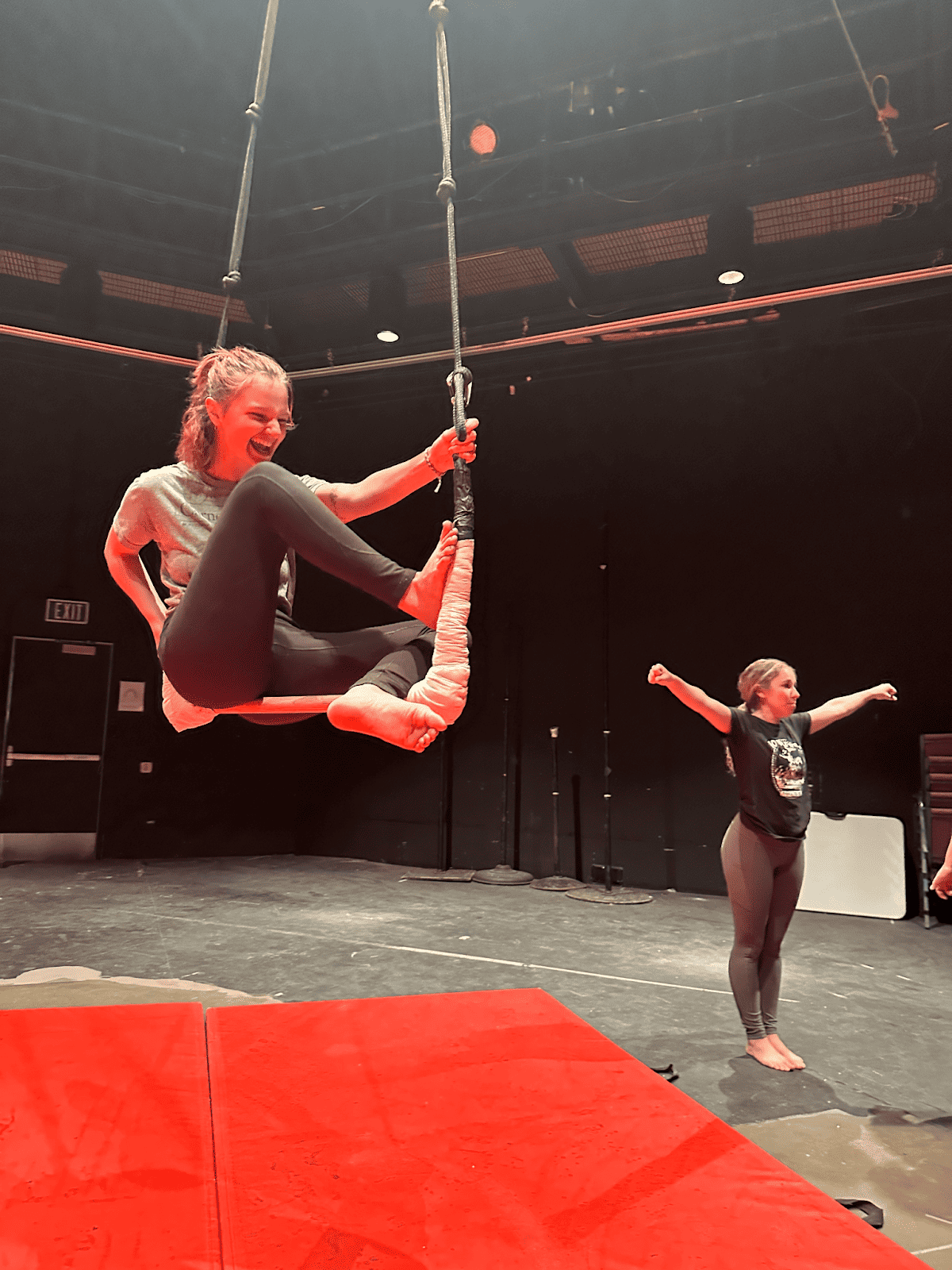By Kira Córdova
In COM 317: Trapeze Dance and Movement, a theater special topics class that explores storytelling and expression through low-flying dance trapeze, professor Steven Cole Hughes and students from a spectacular range of majors and dance backgrounds begin at square one and develop an intricate movement project, a wordless dance interpretation of Mary Poppins slated for December.
Dancing is hard enough on the ground.
Add a bar and two ropes suspended in the air, and it quickly gets a lot more complicated.
The trapeze provides an inanimate partner to interact with, though, and when it becomes a metaphor for something — an idea, a person, an emotion, etc. — it can help dancers convey complex messages to the audience.
In Trapeze Dance and Movement, a class Hughes has taught three times at Western and countless times in his career as an actor and educator across the country, students harness that power while overcoming the challenges of aerial dance.
The process begins with the Skinner Releasing Technique, an approach developed by pioneering dancer Joan Skinner in the early 1960s that challenges stiffness and encourages “movers” to release tension and stress and let all the parts of their bodies move independently from each other when they dance.
In that vein, the class encourages students to let go of being self-conscious about dance as it evolves into learning moves and sequences on the trapeze.
Armed with those tools, students use movement to tell intricate stories.
But not every new move comes naturally. The movement piece doesn’t have a blooper reel, and audiences don’t see the hours of work in and out of class learning tricks and ways to string them together.
From the very first day of the class, Hughes makes it clear that trapeze is a vessel. It’s not about the tricks and the impressive swings; it’s about the stories.
Class time is often devoted to exercises in “journeying,” where students get 2-3 minutes to interact with the trapezes while they represent something in their lives, like stress, joy, or even an ex.
The course challenges students to think about expressing and stringing together sequences of tricks and movements to intentionally convey something using only the trapezes and their bodies.
The trapezes that COM 317 students use are single-point trapezes (also known as dance trapezes), which hang from a single point only a few feet off the ground, forming a triangle.
Flying trapezes, in contrast, hang from two points and can only swing back and forth, while single point trapezes can move in almost any direction. This allows for more creative movement, but it also takes some getting used to.
In class, students spend lots of time practicing their swinging, rotating, and spinning to ensure they’re ready for showtime come December.


